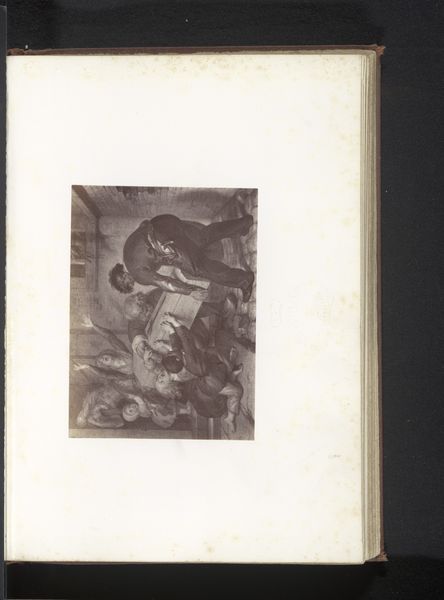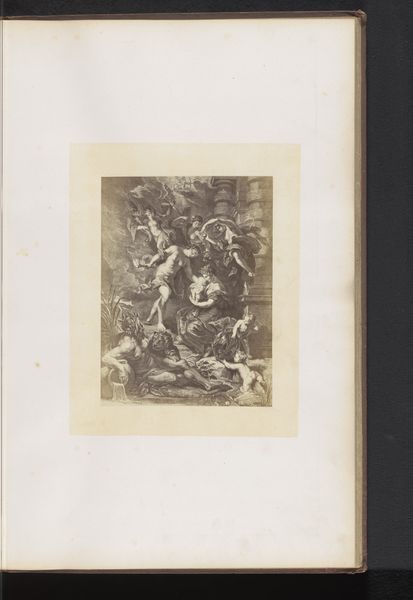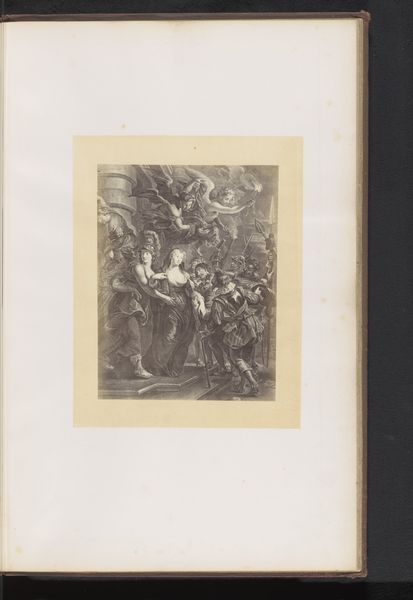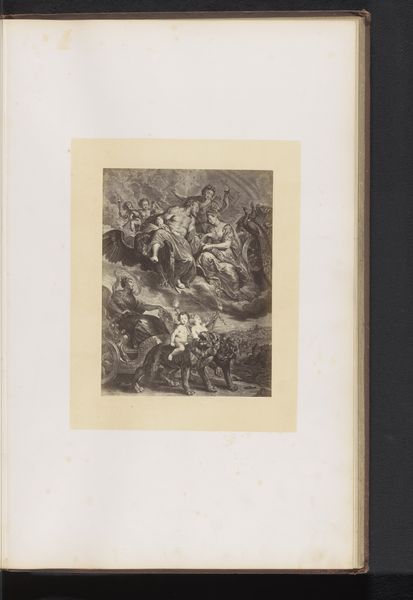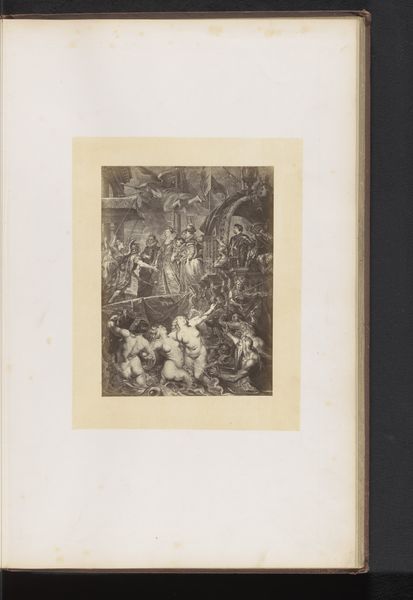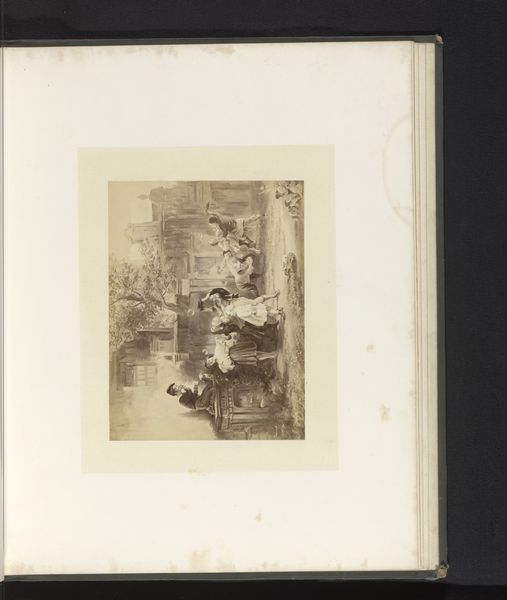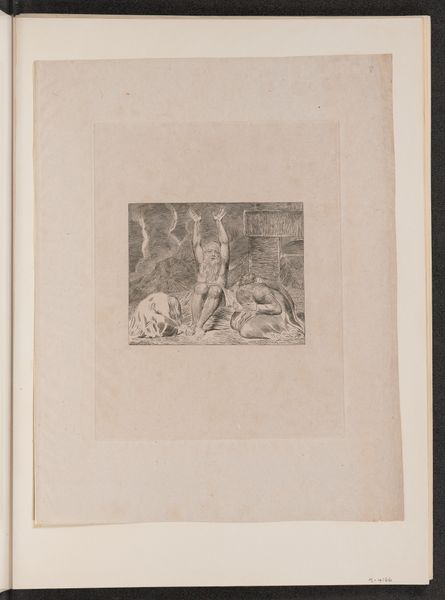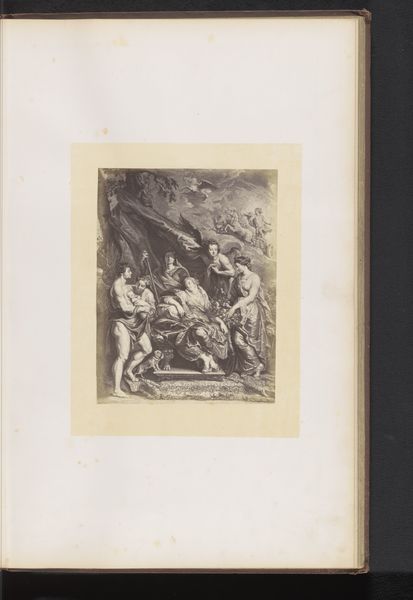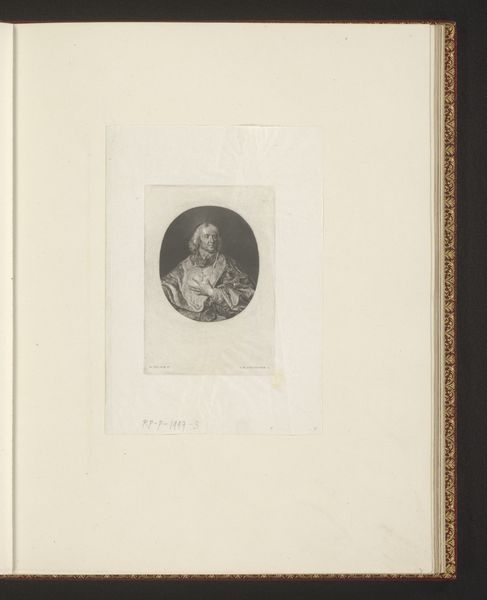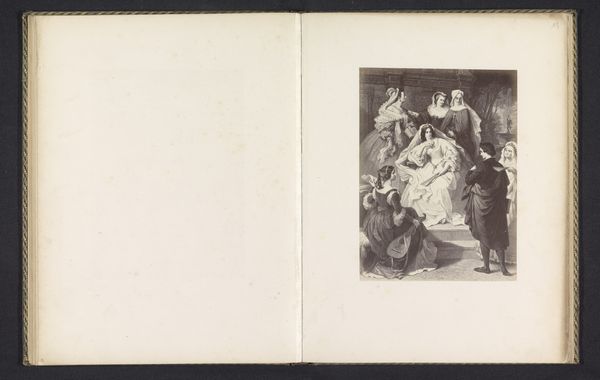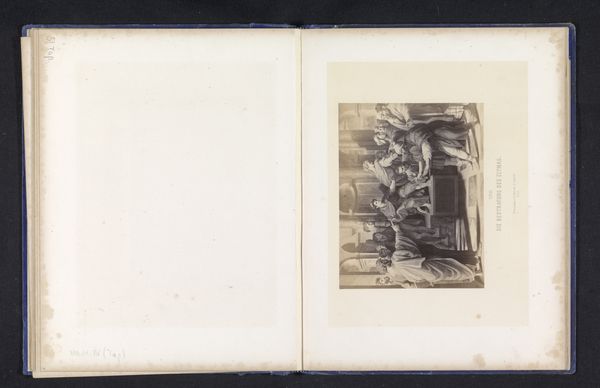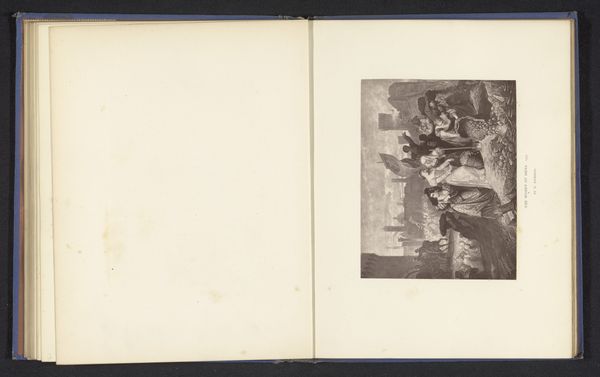
Fotoreproductie van een gravure van De lotsbestemming van Maria de'Medici door Jean-Marc Nattier, naar het schilderij door Peter Paul Rubens before 1864
0:00
0:00
Dimensions: height 190 mm, width 95 mm
Copyright: Rijks Museum: Open Domain
Curator: Oh, this is interesting. I immediately get a sense of lightness but also a staged sort of... drama, if that makes sense? It feels both ethereal and very deliberately composed. Editor: Precisely. We are looking at a photographic reproduction of an engraving of a painting: “The Destiny of Maria de' Medici”. It was created by Jean-Marc Nattier, inspired by the original baroque painting by Peter Paul Rubens, before 1864. You can find it here at the Rijksmuseum. Curator: Right, Rubens, of course! Those figures, the drama, that light – I knew I recognized the hand somewhere in there. And destiny? That tracks, this has a serious mythological air about it. Who *is* Maria de’ Medici, anyway, and why does her destiny look like a scene from Mount Olympus? Editor: Ah, well Maria was Queen of France, and Rubens was commissioned to create a series of paintings celebrating her life. Think of it as a really, *really* elaborate PR campaign, using allegory and myth to legitimize her reign and shape her public image. Curator: A queen getting the "godly makeover" treatment. That makes sense, given the era. It almost feels like political theatre, but on canvas... or copperplate in this instance. The swirling figures, I mean, is that supposed to be Jupiter handing something over? And are those fates at the bottom? I get the feeling Rubens loved a bit of theatre and allegory mixed in with portraiture. Editor: Spot on! It is a sophisticated deployment of baroque allegory to evoke the aura of divine right, it is worth remembering the context in which it was produced: a tumultuous socio-political context of religious and courtly strife. Even reproductions like this print served to further disseminate political ideologies. Curator: It certainly holds up as more than just an image. Makes you wonder how we spin our narratives today and what they'll look like reproduced on, say, Instagram in a century. Gives you a strange feeling about fate itself, doesn’t it? Thanks, history. Editor: And thanks, insight. It's truly fascinating how even in reproductive form, works like these continue to invite such multi-layered reflections on art, power, and legacy.
Comments
No comments
Be the first to comment and join the conversation on the ultimate creative platform.

